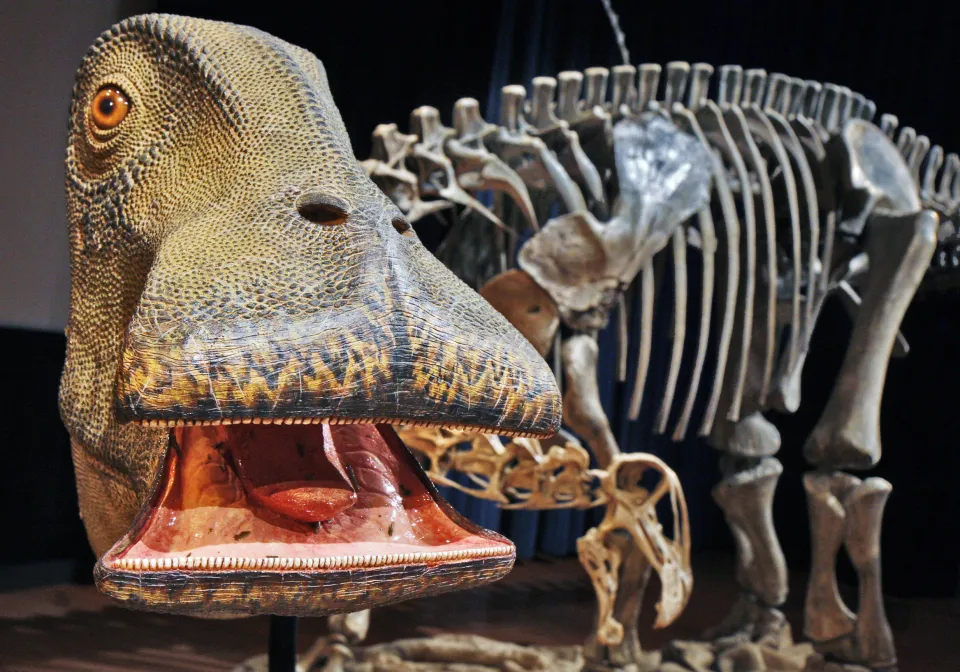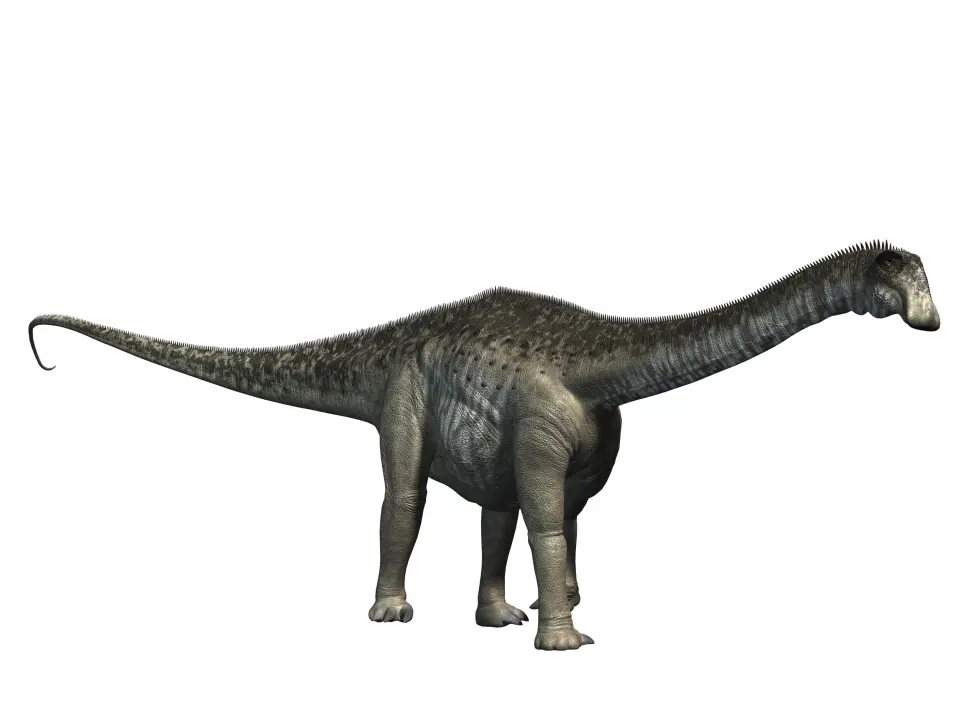Internet pranksters have long sought to trick unsuspecting users into searching for embarrassing or shocking terms. A particularly insidious variation has circulated on Reddit and other social platforms for years: “Don’t Google ‘which dinosaur had 500 teeth.’” When curious individuals ignore the warning and perform the search, they discover the Nigersaurus—a legitimate Cretaceous‐era sauropod—only to realize that its name has been twisted into a racist gag. This article delves into the origin of the prank, the paleontological reality of Nigersaurus, and the broader implications of digital literacy and online hate speech.
Origins of the ‘500 Teeth Dinosaur’ Prank
The First Appearance on Reddit
In September 2019, a now‑deleted user on the subreddit /r/teenagers posted: “Whatever you do, don’t google ‘dinosaur with 500 teeth.’” With minimal context, the post sparked instant curiosity. Within days, similar warnings proliferated across other forums—/r/funny, /r/memes, and beyond—each echoing the same reverse‑psychology tactic.
How the Meme Spreads
- Autofill Amplification: As more users searched the phrase, Google’s autocomplete began suggesting it, lending the prank further visibility.
- Cross‑Platform Sharing: Twitter, Facebook, TikTok, and Instagram users reposted screenshots of the warning, enticing new audiences.
- Meme Variations: Captions such as “Worse mistake of my life” and “Don’t do it, trust me” turned the prank into a running joke within meme culture.
The Racist Punchline
When users finally searched “dinosaur with 500 teeth,” the top result is Nigersaurus taqueti. A subset of pranksters then insinuated a mockery of the N‑word, transforming a scientific name into a racist slur. Comments like “Okay, dinosaur with 500 teeth” serve as coded hate speech, allowing perpetrators to claim plausible deniability while disseminating bigotry. This weaponization of paleontology for harassment represents a disturbing intersection of internet culture and racism.
Nigersaurus: The Dinosaur Behind the Joke
Discovery and Naming
- First Fossils (1976): French paleontologist Philippe Taquet unearthed fragmentary remains of a small sauropod in Niger’s Elrhaz Formation, within a region known as Gadoufaua.
- Full Excavation (1997–1999): American expeditions led by Paul Sereno recovered nearly complete skeletons, enabling detailed study.
- Taxonomic Designation (2007): Sereno and colleagues formally named the species Nigersaurus taqueti. “Nigersaurus” denotes “Niger reptile,” while “taqueti” honors Taquet’s pioneering work.
Physical Characteristics
Size and Build
Measuring approximately 30 feet (9 m) in length and weighing around 4 tons, Nigersaurus was one of the smaller sauropods.
Skull and Teeth
Its skull was remarkably delicate, with a wide, straight‐edged muzzle containing over 500 slender, replaceable teeth arranged in battery‐like rows. These teeth allowed efficient ground‐level browsing of soft vegetation.
Neck and Posture
With a relatively short neck compared to other sauropods, Nigersaurus likely held its head low, sweeping broad swaths of plant matter.

Paleoenvironment and Ecology
- Habitat: During the Early Cretaceous (Aptian–Albian, ~115–105 million years ago), Western Africa boasted lush floodplains and river channels—loosely analogous to modern subtropical wetlands.
- Contemporaries: Nigersaurus coexisted with predators like Suchomimus, fellow herbivores Ouranosaurus and Lurdusaurus, and megafaunal crocodilians (“supercroc”).
- Feeding Behavior: Its tooth structure suggests nonselective grazing on low‐lying ferns and angiosperm seedlings, making it a specialized browser within its ecosystem.
From Fossil to Exhibit: The Digital Reconstruction
CT‑Scan Breakthroughs
The original Nigersaurus skull was one of the first dinosaur skulls to undergo high‐resolution computed tomography (CT) scanning. By digitally reconstructing the fragile bones, researchers overcame the challenge of physical fragility:
- Non‑Destructive Analysis: CT scans preserved delicate structures while revealing internal anatomy.
- 3D Modeling: Scientists created accurate, manipulable digital models, enabling virtual articulation and biomechanical simulations.
- Public Engagement: Interactive models shared online and in museum exhibits demystify paleontology for broader audiences.
National Geographic Museum Display
In November 2007, National Geographic unveiled a reconstructed skeleton of Nigersaurus—complete with a life‑scale skull replica—in their Washington DC museum. The exhibit highlighted both the dinosaur’s unusual morphology and the innovative imaging techniques that brought it back to life.
The Ethics of Name‑Based Pranks
When Science Becomes a Target
Exploiting Nigersaurus’ scientific name to promulgate racist jokes trivializes paleontology and disrespects the people and places central to the discovery. The Republic of Niger, a country with rich geological heritage, is reduced to fodder for online hate.
Digital Literacy and Responsible Sharing
- Awareness: Recognize that viral “don’t look” memes frequently conceal hateful intent.
- Verification: Before sharing, verify the factual basis of startling claims—did a reputable news outlet report it?
- Contextualization: Understand the origin and meaning behind scientific terms; names often honor geographic regions or individuals, not pejorative language.
Platform Responsibility
Social media and forum moderators must swiftly remove content that weaponizes legitimate terms for hate speech. Reddit community guidelines explicitly ban “harassment or hate based on race, gender, or sexual orientation,” yet coded slurs often slip through moderation filters.
Combating Online Hate: Expert Perspectives
Insights from a Sociologist
Dr. Amina Diallo, a digital culture specialist at the University of Birmingham, notes: “The Nigersaurus prank exemplifies how internet subcultures repurpose neutral language as covert hate symbols. Education, not just moderation, is key: users must learn the historical and scientific contexts of terms to resist manipulative memes.”
Tech and Policy Recommendations
- Improved Auto‑moderation: Platforms should refine algorithms to detect contextually suspicious phrases like “dinosaur with 500 teeth” when used in known hate contexts.
- User Warnings: Search engines could display contextual pop‑ups (“This term has been misused online; here’s its scientific meaning…”) to discourage misuse.
- Educational Campaigns: Partnerships between scientific institutions and tech companies can produce short digital modules explaining the true meaning and origin of Nigersaurus.
The True Legacy of Nigersaurus
Paleontological Significance
Nigersaurus taqueti remains an icon of Cretaceous research, valued for its:
- Morphological Novelty: The expansive dental battery reshaped understanding of sauropod feeding strategies.
- Preservation Quality: Near‑complete skeletons permit unparalleled anatomical studies.
- Geographic Importance: The find underscores Africa’s critical role in Mesozoic paleobiogeography.
Cultural and Scientific Outreach
Exhibits, documentaries, and interactive websites have used Nigersaurus to illustrate broader concepts:
- Dental Replacement in Dinosaurs: Live teeth counter adult wear—a feature shared with other herbivores like hadrosaurs.
- Sauropod Diversity: Beyond the colossal giants like Argentinosaurus, smaller genera like Nigersaurus occupied distinct ecological niches.
- Modern Technology in Paleontology: CT scans, digital modeling, and 3D printing demonstrate how historical specimens can yield fresh discoveries.
Avoiding the Next Prank: A Guide for Internet Users
Red Flags in Viral Content
- Reverse‑Psychology Warnings: Phrases like “Don’t click” or “Never google…” often aim to generate curiosity clicks.
- Blood‑Curdling Hype: Unrealistic stakes (“Worst mistake ever”) should prompt skepticism.
- Lack of Credible Source: If no mainstream outlet or scientific paper corroborates the claim, double‑check before sharing.
Best Practices for Safe Search
- Use Incognito Mode: Prevent accidental autofill suggestions from logging in your search history.
- Verify with Multiple Sources: Cross‑reference Wikipedia, academic publications, or museum websites.
- Toggle SafeSearch Settings: Filter out explicit or potentially harmful content.
- Report Hate Speech: Flag racially coded content to platform moderators.
Conclusion: From Internet Gag to Scientific Appreciation
The “dinosaur with 500 teeth” prank may have arisen from juvenile humor and racist intent, but its widespread circulation obscures the remarkable story of Nigersaurus taqueti. Far from a punchline, this dinosaur exemplifies innovation in paleontology—its delicate skull, unprecedented dental battery, and digital reconstructions have transformed scientific understanding of herbivorous dinosaurs. By unpacking the prank’s origins, exposing its hateful undercurrents, and celebrating the true legacy of Nigersaurus, we can promote digital literacy, combat online bigotry, and foster respect for the history etched in ancient bones. Next time someone warns you “Don’t Google that dinosaur,” take it as an invitation to learn something extraordinary—not an excuse for spreading hate.
- Explore THC Beverage Options in Arkansas - May 30, 2025
- Where to Enjoy THC Drinks in North Dakota - May 30, 2025
- Discover THC Seltzer Options in Iowa - May 20, 2025










Follow Me